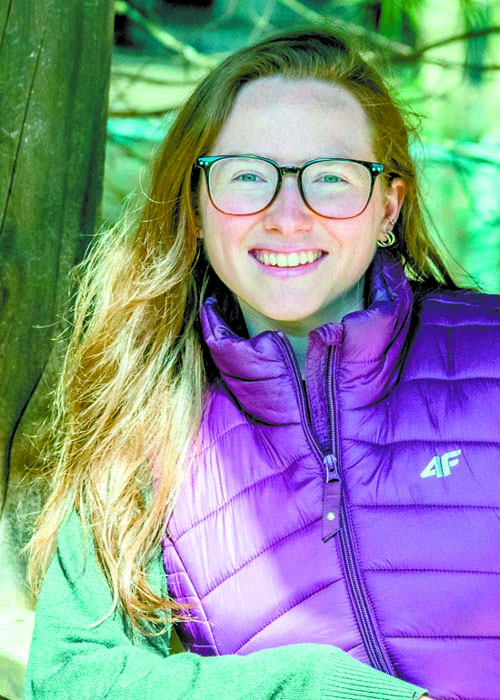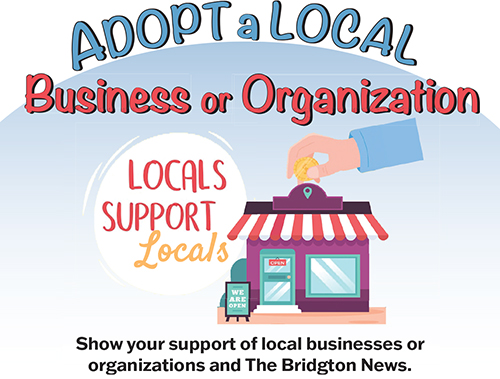The practice of Land & Labor Acknowledgement

By Samantha Zawistowski
Guest Columnist
In the past year, I have made several commitments to myself and my continuing education. I have sought to develop my understanding of how to be accountable and how to hold complex history in my mind and body. As part of a class to help guide me in expanding my understanding of self, we were assigned the practice of writing a Land and Labor Acknowledgement and to make a commitment to action in connection with our practice.
A Land Acknowledgement is the practice of recognizing the importance of the land, valuing that we have the privilege to live on it, and that it provides us with the things we need: food, water, shelter, etc. It is also about recognizing the deep ancestral history of the land. This means recognizing that the land has a much longer and varied history than our own, that Indigenous peoples have played an important role in its care, and that this land was stolen from them.
A Labor Acknowledgement is the practice of recognizing the work done by people of color (POC). The work by non-white bodies is often overlooked, unreported and unrecognized. Often as Indigenous peoples advocate for their rights to practice their culture, they also advocate for the health of the environment and continue to play the part of caretaker.
As a someone who identifies as White, I have found that my culture has encouraged disconnection from history, from the land, and even from my own body. I have found the practice of Land and Labor Acknowledgements to be restoring. As my commitment to action and accountability, I pledged to submit a version of my Land and Labor Acknowledgement to the Bridgton News. I hope to intrigue, inspire and help others who may have felt confused and dismayed by the racial tensions of 2020. Mostly, I hope to demonstrate my own accountability for the participation in erasure, and to begin my own work to counter the culture of White supremacy. My practice will not be perfect, but it is sincere and with a commitment to accepting criticism and critique.
When I delivered this Acknowledgement, the recipients were read to so that they could be relaxed and inside their own mind. Consider having someone read this aloud to you. Finally, I invite you to share my Land and Labor Acknowledgement: use it to open a meeting, send it to a friend, as a family consider your knowledge of the Indigenous land you live on, write your own Land and Labor Acknowledgement, read it on a walk in the woods, consider what commitments you could make, or any other use which feels right to you.
I invite you to close your eyes or take a soft gaze. Stretch and wiggle until you find a position which is comfortable. I invite you to notice your breath: how it fills your lungs and then blows outward through your lips.
I invite you to notice your heartbeat pumping alongside your lungs.
Feel the aches and pains, the discomforts, in your body: acknowledge them, hold them, then send them away. Reach downwards sending your roots down, down into the soil beneath you. Extend your roots outwards. Feel the nurturing soil and drink from underground streams. Notice the worms and bugs. Say “hello” to the burrowing creature. See the animals who live among the bushes and trees. Recognize that you are one of these creatures.
Hold nature in your mind and breathe in healing, kindness and care. Exhale criticism, judgment and toxicity. Breathe in the oxygen which plants and trees have provided for you, and breathe out the carbon dioxide to gift back to the trees.
Breathe in, breathe out.
See before you a pale orange glow on the horizon. The color intensifies. There are yellows, pinks and purples. Waves crash against the rocky coast, the crisp smell of cold salty air waifs around you, sea gulls call out, and seals bark. The sun is rising in Wabanakik (wa-ba-na-kik). It is the first place in the United States which sees the sun rise every morning. Wabanakik literally translated is “the Dawn land.”
I live on the land Wabanakik, which is inhabited by the American people and the present day Wabanaki Confederacy. Collectively, the pre-colonial territory the Wabanaki lived on encompassed the land which is now called Vermont, New Hampshire, Maine, New Brunswick, mainland Nova Scotia, Cape Breton Island, Prince Edward Island, Newfoundland and Quebec.
These were the tribes with whom the Vikings made first contact with, though they were much smaller confederacies as the Wabanaki Confederacy was not established until the 1680s. Yet, even as Samuel de Champlain “discovered” the Mawooshen in 1604, he noted that the natives were already in possession of some European goods and that post-Viking Europeans had been traveling in the region as early as the 1520s.
The Abenaki were not originally a tribe, but rather many smaller tribes and bands. Abenaki is a cultural, linguistic, and geographical grouping. After colonial contact these many tribes formed this singular identity in dealing with the colonizers.
The Abenaki are one of the five members of the Wabanaki Confederacy, who lived in the eastern region of Wabanahkik, present day Vermont, New Hampshire, Quebec and Maine. To the Abenaki, Wabanahkik is the older name for the land, and many modern Abenaki call the land N’dakinna (nn-da-kin-na) “our land.”
Today, there are two reservations in in Canada covering a total area of less than three square miles. The majority of Abenaki in Canada do not live on these lands. In 2011, two of four Abenaki tribes residing in Vermont were officially recognized by the state: the Nulhegan Band of the Coosuk-Abenaki and the Elnu Abenaki Tribe. Many Abenaki do not live on reservations, but live near Lake Champlain alongside the American community without a formal identity or land of their own.
The Abenaki living in Vermont have fought for their right to be seen and recognized by the more powerful nation of colonizers. Indigenous People’s Day has replaced Columbus Day. A bill to add Abenaki place names on state park signs is on the governor’s desk after receiving nearly unanimous support in both the Senate and the House. It is seen as a move which does not erase the names, which have been most recently used, but which acknowledges the deeper and more ancient names of these places. Beginning this year, a law granting free hunting and fishing licenses to tribal members came into effect allowing them to practice their cultural heritage freely.
However, only Abenaki who are members of tribes officially recognized by the state benefit from the new law. Other bills have been set aside due to Covid-19, including one which proposes the state apologize for its participation in the eugenics movement of the 20th century which involved forced sterilization of Natives, French Canadians, the disabled and the poor.
Overwhelmingly, the Abenaki people have been displaced, as recently as 1931 been subject to attacks on their population, have had their language erased, their rights stolen, and remain unrecognized federally by the United States government. Despite American school systems teaching that the native peoples of Wabanakik have long since disappeared, even citing “the last Abenaki” by name, the Abenaki are here.
In preparing this Land Acknowledgement, I realized just how little I knew about the land I lived on. I know when my town was founded, that this land was originally part of the Massachusetts colony. I knew there were native people who lived here before and that some of the place names used reflect that heritage. Yet, that heritage exists in a way which is performative more than connecting. I might be able to pronounce: Ossipee, Pemigewasset, Pequawket, Piscataqua, Souhegan and Winnipesaukee, but those names hold no deeper meaning for me or the people in my life.
This North Eastern Indigenous community was and is complex, widespread, and sophisticated, and my White colonizing ancestors came here with the intent to erase these people to make room for themselves. I challenge myself to no longer participate in the effort to erase and ignore the history of the Wabanaki Nations. I pledge to continue to educate myself about both the pre- and post-contact histories of these people and to write at least one letter to the editor of my local and widely read town paper about the importance of this history. I pledge to pursue the truth that our American story is not only that of Champlain or Sanborn, but those contributions made by bodies of color – not beginning and ending with Black and brown American bodies, but also the Native peoples who have been custodians of this land far longer than we have been its owners.
I ask you again to breathe deeply into your body.
Reach downwards sending your roots deep, deep into the soil beneath you. Extend your roots outwards and embrace the land. Feel the life and activity of the land. Recognize your place as a creature of the land.
Look up and see before you a pale orange glow on the horizon. The color intensifies. There are yellows, pinks and purples. Waves crash against the rocky coast, the crisp smell of cold salty air waifs around you, sea gulls call out, and seals bark. The sun is rising in Wabanakik. The sun is rising in N’dakinna.
Thank you for being witness to my practice of accountability.
Samantha Zawistowski is a resident of Bridgton. She serves as the Youth Services Librarian at Bridgton Public Library and serves on the Town of Bridgton Ordinance Review Committee.


